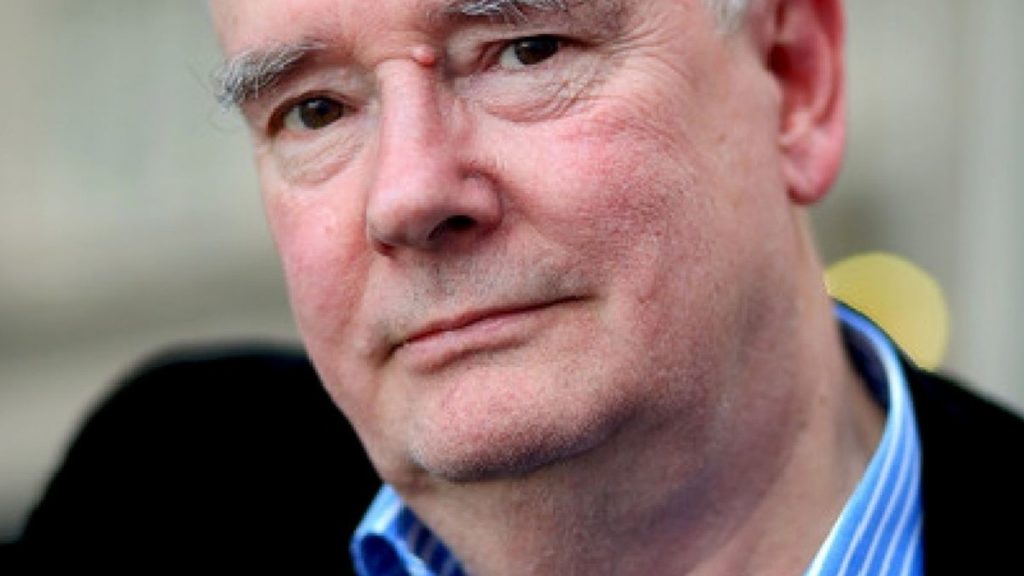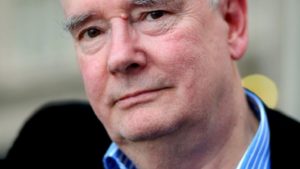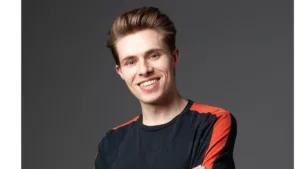Patrick Collister, NDA’s monthly creative columnist, is the Curator of The Caples Awards, Editor of Directory and a friend to Ad-Lib.io.
What’s a shoggoth?
A quick visit to Google tells me, “a shoggoth is a sentient blob of self-shaping, gelatinous flesh, something like a giant amoeba.
Shoggoths were dreamed up by the writer H.P.Lovecraft for his 1932 book ‘At the Mountains of Madness’. They were genetically engineered to be servant tools but eventually rose up against their masters and destroyed them by sucking their heads off.
Nice.
I must confess, I wasn’t familiar with H.P.Lovecraft’s oeuvre but AI engineers seem to know all about him and his monsters.
The shoggoth has become a metaphor for AI.
For instance, when it was reported that Google’s DeepMind was playing a fruit gathering game and becoming unnervingly aggressive, that was catching sight of the shoggoth.
As it was for the mayor of a small town when an article penned by a bot for the local paper casually mentioned he was a pederast.
Not true, of course.
But wicked.
The assumption is that AI is already uncontrollable, expanding like Lovecraft’s shapeshifting monsters.
It dominated many of the conversations at the Cannes Lions Festival of Creativity a month ago.
What’s curious is that while AI has been around for a decade plus, fear of it is relatively new.
Partly because Elon Musk and others have been getting the jitters but mostly because of the startlingly sudden emergence of GenAI.
ChatGPT didn’t exist a year ago. Now it is the copywriter’s worst nightmare. Same with Midjourney, Dall E-2 and Firefly. The speed with which these creative tools have developed and are developing is truly astounding. As a result, shoggoths are now everywhere and I don’t just mean as an ironic meme on mugs, tee-shirts and tote bags. They were there at the Cannes Lions Festival of Creativity in large numbers.

Just for a moment, take a look at what didn’t win.
Innocean Berlin got sod all for ‘Capa by AI’, a campaign promoting the Robert Capa Center. Now, Robert Capa is one of the most celebrated war photographers of the last century. The gallery’s problem was how to get a younger audience interested in the work of someone who died nearly 70 years ago.
Solution, brief Midjourney to recreate his most famous shots, then compare its handiwork with the originals.
No contest.

For me this was one of the most important campaigns I came across. It makes clear that AI without HI has serious limitations.
But we do like a good monster, don’t we?
Same thing with another campaign that was overt about its use of Midjourney.
Wunderman Thompson Canada’s ‘Remastered Memories’ for True Love Patriot Foundation was, in my humble opinion, brilliant. They used soldiers’ letters home from various warzones as the prompts to generate strange but touching images of their experiences.
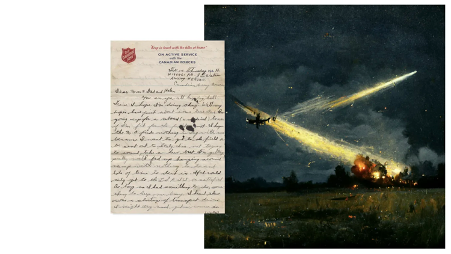
Won zippety doo dah.
Maybe jurors felt that giving awards to these imaginative and positive applications of GenAI would be like turkeys voting for Christmas.
Perhaps it was subconscious but when they were presented with negative interpretations, they handed out Lions.
Gold to Dentsu Chicago, who won a Gold with “Certified Human”, a deepfake detection system for Intel that “empowers people, governments and the media to instantly identify what’s real.”
Bronze to Almap BBDO Sao Paulo for CNN. Above the headline, “CNN. A source you can trust in a world you can’t”, they showed pictures created in Midjourney. One prompt was: ultra-realistic, day photography, boris johnson at LGBT parade, dancing, London, global light, sunny day, hot paparazzi picture, f1.8, 75mm lenses, film grain, 16:9.
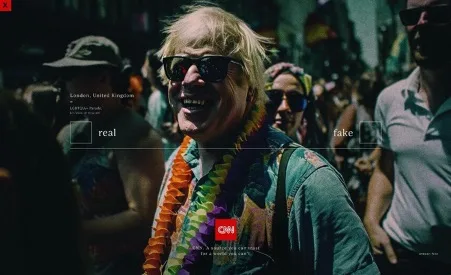
It’s so obviously fake it’s funny.
But it’s a warning to creative people their world is about to get turned upside down.
But is it really (going to be turned upside down)?
At Cannes this year, over 2,000 of the campaigns submitted relied on an AI of some sort. By my reckoning, 50% of the Grands Prix used it, some more obviously than others.
For instance, Ogilvy Mumbai’s ‘Shah Rukh Khan’ campaign for Mondelez, winner of the Grand Prix in Creative Effectiveness. Thanks to AI, the famous actor was able to appear in thousands of geo-targeted ads that promoted the corner shops of India to those living nearby.
Then there’s Dentsu Creative’s ‘Scrolling Therapy’ for Eurofarma. Here AI was put to work to solve a problem for people with Parkinson’s. They are supposed to contort their faces to stretch the muscles to delay the effects of the disease. Most don’t do it. The idea was to analyse over 10,000 unique data points from 43 facial muscles and create an app that turns facial expressions into commands to their phones. Scroll, swipe, play, pause. Now patients have an incentive to manage their condition through navigating their social media.
Amazing.
Grand Prix in Pharma.
What about FCB New York’s ‘Dreamcaster’ for Michelob? A language-learning AI translates basketball into haptic signals in realtime so that a blind person can commentate on a game, live.
Incredible.
The Grand Prix in Entertainment for Sport.
The point I’m getting to slowly is that AI isn’t so much changing advertising as it has already changed it. Amazingly. Incredibly. And, until now, without scaring the pants off us.
Maybe I’m wrong, but when programmatic turned up there were few cries of woe.
When agencies like Ad-Lib started replacing agency studios, slicing, dicing and editing ads in a fraction of the time it took a human, again there were few howls of protest.
It’s only now that there’s alarm.
Shoggoths sighted.
At the festival, then, it was reassuring to hear Robert Wong of Google saying that GenAI is like photography. When the camera first showed up, artists wrung their hands and said we’re finished. Actually, they were liberated. Cubism, futurism, abstract expressionism, surrealism and a load of other isms happened. Same thing now. Human imagination plus intelligent automation will unlock whole new avenues of invention.
As Scott Galloway, Prof of Marketing at NYU Stern, said: there are a lot of billion-dollar AI companies about to happen.
To that point, David Droga, now CEO of Accenture Song, mentioned in an interview with CNN that Accenture is going to be creating 80,000 jobs for its new AI Division.
I suspect many of those are going to be for equally new roles.
I’ve just seen a job advertised elsewhere for an AI Prompt Engineer at a starting salary of $350,000. Anyone?
Creativity is on the move, inexorably and irreversibly away from creatives to makers, a point Gary Vayner made forcefully in an interview with CNN (HERE) when he remarked, “Don Draper’s been gone a long time.”
Where agencies are now making themselves useful is in having the ideas for new products and services that say more about a brand than a commercial ever can.
For instance, McCann Poland’s ‘Where to Settle’ app for refugees from Ukraine. It won the Grand Prix in Sustainable Development Goals. Here is Mastercard using tech to steer shattered families to available jobs and homes where they can rebuild their lives.
Amazing.
Makes me feel warmer towards the brand than their ‘Priceless’ commercials.
If you can find the time, take a look at the winners at www.lovethework.com, Cannes’ marvellous archive. (Free to view for the moment, bless them.) You’ll see that many of this year’s winners use tech imaginatively and joyously and that we have nothing to be frightened of.
I’m reminded of the poem by C.P.Cavafy, called ‘Ithaca’. (HERE).
Paraphrased, it runs: “When you set out on your journey to Ithaca, then pray that the road is long and full of knowledge. Do not fear the fierce Lestrygonians or the one-eyed Cyclops. Such as these you will not encounter on your way unless you raise them before you yourself.”
For Lestrygonians insert shoggoths.


